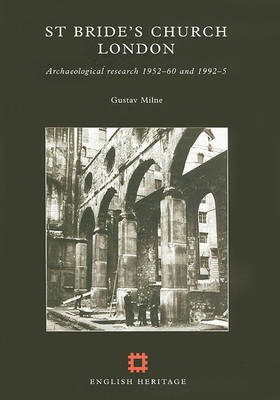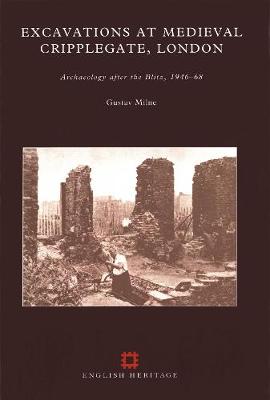English Heritage Archaeological Report
1 primary work • 2 total works
Book 11
One of the first English attempts to mount the total research excavation of an urban parish church, at blitz-damaged St Bride's in Fleet Street in the City of London, is recorded in this report. St Bride's foundation date is earlier than indicated by surviving documentary records and highlights the complexity of its subsequent development. Moreover, it demonstrates how archaeology can significantly extend the history of such a relatively well-documented building. Professor Grimes died before completing his definitive report. This report is as an attempt to make good that omission. It is an assessment of the surviving field records and a re-evaluation of 1950s finds, together with an account of building recording at St Bride's in 1992-3, conducted by a team from University College London. These excavations prove to be of more than local significance to medieval archaeologists. It was on the site of St Bride's that the concept of a parish church's research excavation was first evolved, after the rubble from dozens of churches bombed during the Second World War were usually carted away with little or no thought for archaeological recording. Among many problems faced were the logistics of opening up a large internal area and exposing large groups of burials. Evidence was found, not only at foundation level in the ground, but also in the standing fabric of the medieval building, elements of which survive in the present standing building. Detailed study of the finds recovered in 1952-4 also proved rewarding, and reports on the pottery, moulded stones tiles, grave covers, glass and coins are included.
The Cripplegate area of London was the site of a Roman fort and later of medieval structures and artefacts. Excavations between 1946 and 1968 by Professor W F Grimes for the Roman and Medieval London Excavation Council were carried out on 25 bomb-damaged sites, and were preliminarily reported by him in 1968. As part of a major post-excavation programme funded by English Heritage from 1992 to 1997, the archived material from these excavations are being fully published in a series of five volumes, of which this book is one. This report analyses the material afresh and re-appraises Grimes' work. It discusses the post-Roman structures and artefacts of the medieval defences, secular buildings (including evidence of Saxon London), parish churches, and a medieval hospital. Finally, these structures are put into a more contextual framework in a discussion of the dating and development of the street pattern of medieval Cripplegate.

